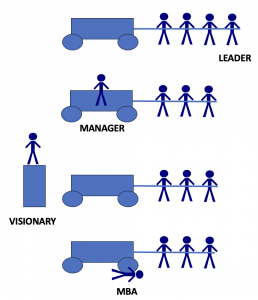This is the promised follow up to The USA is a Third World Country.
As the great Robert Reich points out in How Much Wealth is Too Much?, there are now only five (5) ways to become a Billionaire, and none of them are good!
- Exploit a Monopoly
- Exploit Inside Information
- Buy off Politicians (20M in lobby funds gave Billionaires a 1B tax cut)
- Defraud Investors
- Inherit It (60% of all wealth is inherited, tax free)
There are no “Self Made” Billionaires. As the great Robert Reich again points out, the origins of today’s Billionaires are Multi-Millionaires with the money and connections to get them going. Wealth is begot from wealth.
And due to all the inheritance and capital gain loopholes, every time it’s passed on it just grows and grows so millionaire families from a century ago had 100 times that before the turn of the century and now have billions today. (Unless, of course, they exploited a monopoly, inside information, or investors, in which case they may have went from millions to billions without the intermediate step.)
Then there’s the fact that most of them greatly increase their wealth by:
- manipulating stock prices for short term gains
- paying their workers as little as possible to increase profits
- using their success to get massive raises and bonues, and even bigger salaries and bonuses at their next job (CEO pay has skyrocketed 1,322% since 1978 [Economic Policy Institute], your pay has increased less than 18% … see the discrepancy (as their pay has increase 73X more than yours has)?
- borrowing against their wealth to invest in other ventures …
- including borrowing against their capital gains tax free (while paying less interest than they make on their new investments)
- contributing to lobby groups / SuperPACS that create new loopholes for them to exploit
- etc. etc. etc.
So they’re not benevolent.
Not to mention the fact that, in GDP terms, 6 Trillion is more than the GDP of every country on earth except for China and the USA. In fact, that’s more than the GDP of the bottom 128 countries combined (Worldometer). They have more buying power than 70% of the world. (And if you tell me it’s not right, I’d agree.)
But banning them is not the answer. If you try to take away their wealth, they’ll flee with it to another country. If you overtax them, they’ll invest all their money somewhere that doesn’t. If you limit their earnings, they’ll go elsewhere.
And while the departure of some of them would lead many of us to say goodbye and good riddance, the reality is that the country needs the (very) small number of “self-made” billionaires that start with millions and end up with billions and do it the old fashioned way they used to do it a century ago (after the US government busted up the railroad tycoons and brought in anti-monopoly laws) … i.e. there used to be a 6th way, and that way was build a business that increased value for everyone involved … the founder, the shareholder, and the workers. Like Ford did.
Ford wasn’t perfect (do your research), but he knew two things.
- if you want to grow your business, you need to make an affordable product
- if you really want to grow your business, make sure you pay your workers enough for them to afford it
Billionaires like that grew the economy because they lifted all boats (not just theirs). It’s billionaires like that who are needed to grow it again. Hopefully some well meaning ones will come along and start the cycle on their own, but like Reich, I’m a bit doubtful. The government may need to stand up for the people who elect them and push the billionaires in that direction.
How? That’s a damn good question. But we’ll tackle that in our next post.

